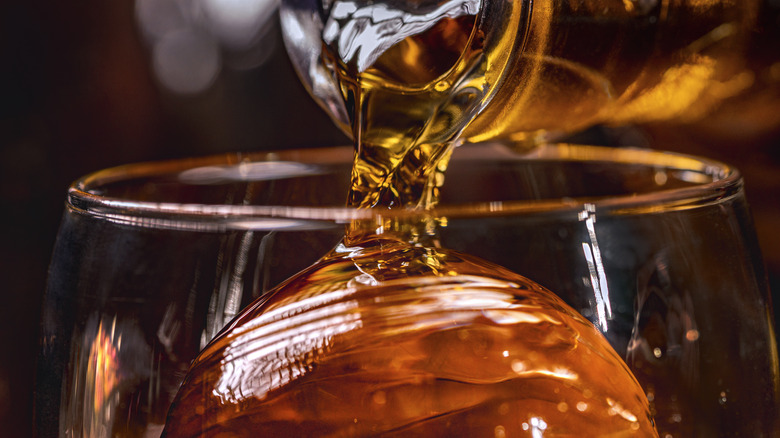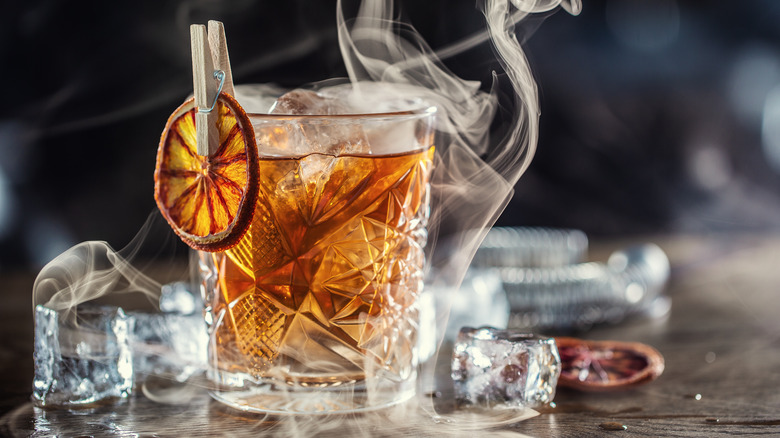The Difference Between A Premium And Super Premium Drink
In the cocktail world, "nuanced and difficult to define" is kind of the name of the game. The only thing that separates a Manhattan from an Old Fashioned is how they're sweetened, and a "Gin Martini" versus a "Dirty Martini" versus a "Perfect Martini" is the difference of one ingredient. But, conceptually, the difference between a "premium" and a "super premium" label is probably exactly what you'd think it is.
According to The Distilled Spirits Council of the United States (DISCUS), for a spirit to qualify as "premium," it must meet four criteria: easy sippability, quality ingredients, a unique and full-bodied flavor, and be aged for longer than the minimum requirement for that specific type of liquor. A blanco tequila, for instance, wouldn't qualify as a "super premium," but a longer-aged añejo might. A super premium "drink," then, refers to a cocktail made with a super premium liquor as the base.
For example, Alberta Premium Cask Strength Rye clocks in at 127 proof and retails for $79.99 per bottle. Its cinnamon and green tea notes make for a unique profile with sippability, but the spirit is reasonably accessible and produced in large enough batches that it isn't necessarily "super premium." On the flip side, Four Roses Platinum Super Premium Bourbon Whiskey runs for $267.99 per bottle and is only sold in Japan; it must be obtained as an export. Its uniquely sweet, floral profile and smooth 86-proof strength combine to make this spirit a super premium offering.
It's all about price, craftsmanship, and accessibility
Another, even tougher-to-define factor that separates "premium" from "super premium" is brand reputation. In April 2023, the bidding started at over $9,000 for a single bottle of a rare Pappy Van Winkle bourbon, which was made in a historic distillery that hasn't existed for decades. In general, super premiums are often rare, small batches produced in limited quantities.
In a less nuanced way, a lot of the categorization has to do with price — and you don't have to pay thousands of dollars to get your hands on a super premium bottle. Popular brand names like Jack Daniels, Bacardi, and Absolut run in the $20-$40 range for a full-sized bottle and are all technically categorized as "premium" spirits. The next echelon of price for brands like Grey Goose, Chartreuse, and Belvedere clock in around $40-$70 per bottle, and are considered "super premiums." So, in this case, the glamorous-sounding "super premium" title has less to do with exclusivity and more to do with quality and craftsmanship.
Whether there's actually a significant difference between Gin Mare Capri and Seagram's Extra Dry to warrant a 150%-200% price increase (or more) lies in the palate of the beholder. But, to discerning spirits fans, the super premium label might be well worth the price tag.

